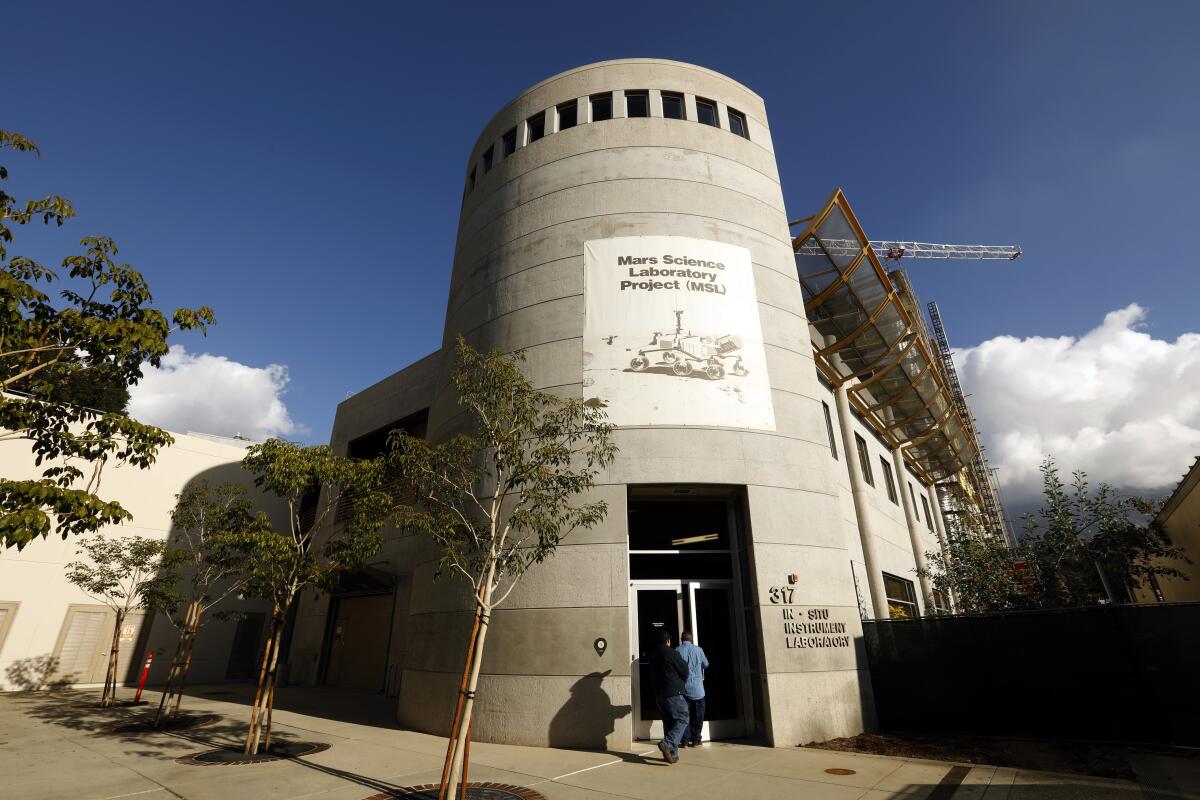NASA’s Jet Propulsion Laboratory unscathed by Eaton fire, but not its workforce

- Share via
- About 210 JPL employees lost their homes in the fire and another 100 will likely be displaced long-term by the extent of the damage to their house or neighborhood.
- The lab itself was unharmed, and employees kept the 88-year-old institution operational throughout the disaster.
On Jan. 11, an airborne imaging spectrometer managed by NASA’s Jet Propulsion Laboratory flew over Los Angeles County to survey the damage from the historic fires.
It captured images of charred hillsides in Angeles National Forest, devastated neighborhoods in Altadena and — just west of the Eaton fire’s burn scar — the 170-acre JPL campus.

With its physical buildings and structures intact, the La Cañada Flintridge institution escaped the worst of the fire unscathed. The same can’t be said for its workforce.
At the height of the emergency, about 20% of the institution’s 5,500 employees were evacuated from their homes, director Laurie Leshin said.
About 210 employees lost their homes in the fire and an additional 100 — Leshin included — will likely be displaced long term by the extent of the damage to their house or neighborhood. Many more evacuees have yet to receive clearance to return home.
Despite the harrowing circumstances, employees kept the 88-year-old institution operational throughout the disaster, in some cases putting decades worth of worst-case emergency training to use for the first time.
“There’s no doubt that it was a dramatic scene on the first night of the fire,” Leshin said.
JPL manages the Deep Space Network, a global web of antennas that communicate with spacecraft traveling past Earth’s moon. It’s staffed 24 hours a day, 365 days a year.
“We practice twice a year what would happen if we had to relocate mission operations, [but] we’ve never had to actually do that,” Leshin said.
As the flames approached, employees — many under evacuation orders themselves — put those plans into action for the first time, temporarily relocating control of the network to the Goldstone Deep Space Communications Complex near Barstow without losing any data.
“It really is a heroic story,” Leshin said. “JPL is a national treasure, and it’s our people that make that so. Their commitment to our mission is incredible, and they’re going to make sure that exploration continues, no matter what.”
The fires follow a painfully difficult year for JPL, which laid off 855 employees and 100 on-site contractors after cuts to NASA’s budget.
The institution is funded by NASA but managed by the California Institute of Technology. A disaster relief fund launched Jan. 10 has already raised more than $2 million for staff, faculty and students from the two campuses affected by the fire.
Most of the cleanup and repair work left to do at JPL is from wind, not fire, Leshin said: some damaged roofs, some downed branches. The buildings will reopen to staff next week, though employees who are able to work remotely will be encouraged to do so for now.
“We’re really grateful for the space community and their care at this challenging time,” Leshin said. “But exploration continues, so we will be back.”
More to Read
Sign up for Essential California
The most important California stories and recommendations in your inbox every morning.
You may occasionally receive promotional content from the Los Angeles Times.












